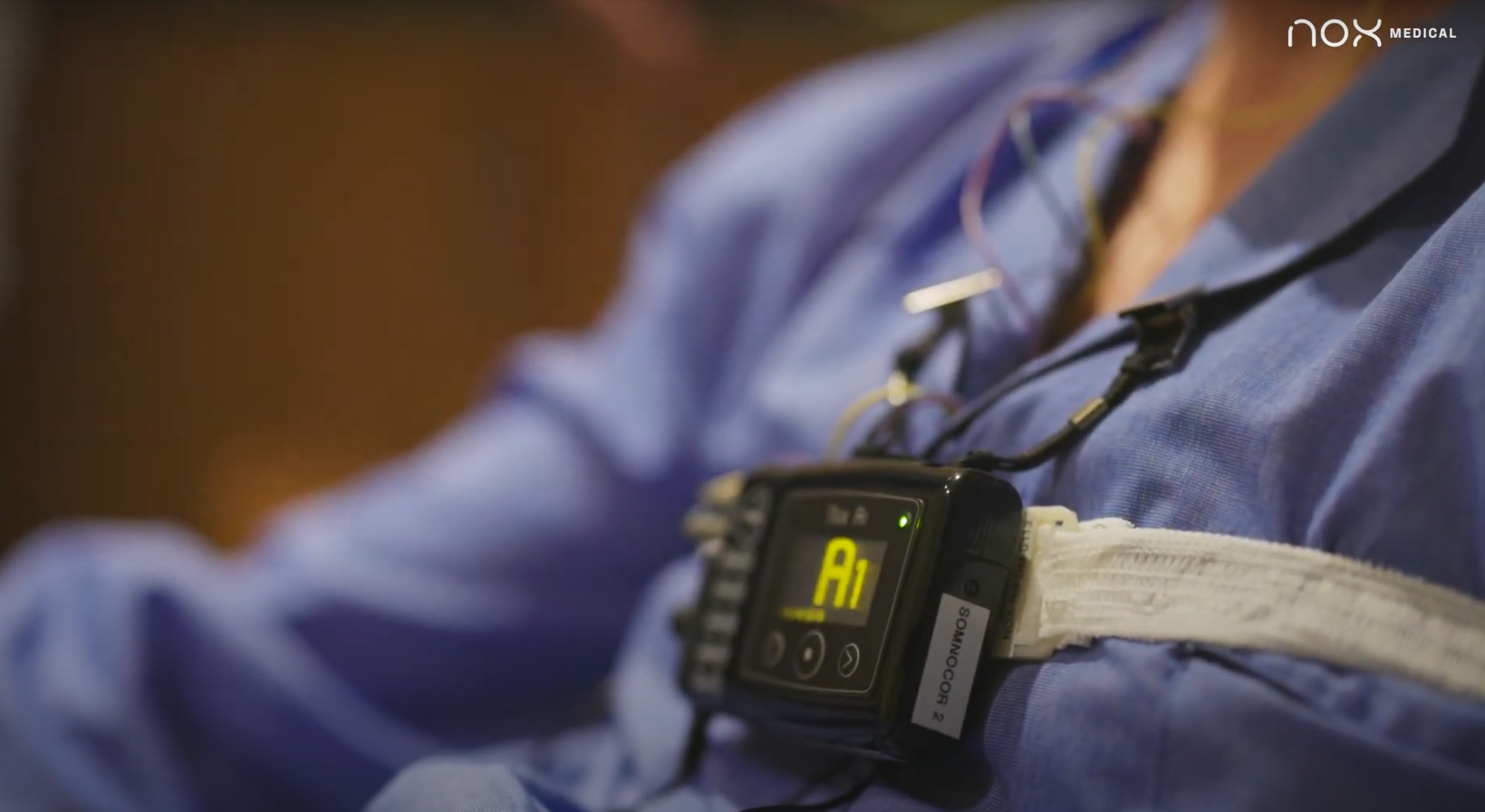The prevalence of sleep disorders is so high that many healthcare systems can not run a full in-lab polysomnography (PSG) on every patient who needs a proper diagnosis, and it is estimated that the vast majority of adults with sleep apnea are undiagnosed.
While in-lab PSG remains the gold standard in sleep diagnostics, there are many obstacles for patients to undergo in-lab sleep testing, including long wait times and the inconvenience of spending the night at a hospital.
“The demand for proper sleep diagnostic studies is higher than ever and the systems currently being used are not flexible enough, not focused on patient comfort, and not harvesting from the opportunities that novel methods and artificial intelligence brings to sleep medicine. For too long, we have known about these problems and too little has been done to address them,” says Petur Mar Halldorsson, CEO of Nox Medical.
The solution is simple: bring advanced diagnostic sleep testing into the patients’ homes.
With the launch of the Nox A1s, a full in-lab PSG with ambulatory capabilities, we now have achieved the capability to bring many of the complex channels typically reserved for the sleep laboratory into the bedroom of each person who needs a sleep test.
Designed with comfort, flexibility, and ergonomics in mind, the Nox A1s can perform level I, level II, and level III sleep tests in a variety of settings to reach diverse patient populations. The Nox A1s has been utilized across populations in multiple countries and consistently demonstrates high success rates in clinical studies.
Now, after the A1s launched more than a year ago, the sleep monitor is in use across the world. Patients can now have access to ambulatory PSG sleep tests in the comfort of their own homes.
“The addition of [Nox A1] studies here in our practice has made a big difference to patients and to the laboratory,” says sleep specialist Judith Leech, MD, medical director at Somnocor in Canada.
Prior to introducing the Nox A1 sleep studies, Somnocor patients would undergo either a typical home sleep test or an in-lab PSG study. Now, the health center’s patients have access to a full PSG at home. The only difference between an in-lab sleep study, and one conducted with the Nox A1s is that it is not physically attended and observed by a clinician. All the same metrics as an in-lab PSG are recorded, including the electrical activity in the brain, using electroencephalography (EEG).
“Now we can do the full diagnostic study at home, with the patient in the comfort of their own home and get just as much data as we would with an in-laboratory study,” says Leech.
After the sleep center Somnocor spent seven years successfully using the Nox T3 home sleep test, they decided to invest in the Nox A1 to continue to meet the needs of patients during the pandemic.
“We felt that it brought a great deal of benefits both to us and to our patients,” says Catherine Guilbault, technical director of Somnocor in Quebec, Canada.
“It was very easy for our technicians to use as well as keeping us operating all throughout the pandemic,” Guilbault says. “The implementation of the Nox A1 devices was very seamless.”
The Nox A1s is built with a number of technological advances, including fast download speeds, faster connectivity with Bluetooth, and at least 10 hours of battery life. After experiencing immense success with Nox devices, the sleep center Somnocor is investing in more Nox A1s devices to supplement the need for outpatient PSG testing.
References:
Faria A, Allen AH, Fox N, Ayas N, Laher I. The public health burden of obstructive sleep apnea. Sleep Sci. 2021;14(3):257-265. doi:10.5935/1984-0063.20200111
Hung CJ, Kang BH, Lin YS, Su HH. Comparison of a home sleep test with in-laboratory polysomnography in the diagnosis of obstructive sleep apnea syndrome. J Chin Med Assoc. 2022;85(7):788-792.
Topic: Company Updates





